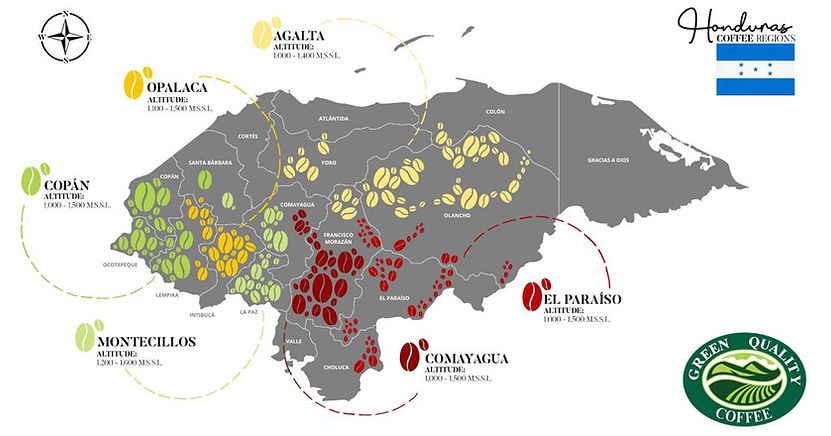History of Coffee
Coffee is one of the most popular beverages in the world, and it has a rich and fascinating history. The earliest evidence of coffee drinking dates back to the 15th century in Yemen, where it was cultivated and roasted for its stimulating effects. From Yemen, coffee spread to other parts of the Arab world, and eventually to Europe.
In Europe, coffee was initially met with suspicion and even opposition. Some people believed that it was a harmful substance, while others were concerned about its potential to spread social unrest. However, coffee's popularity eventually overcame these objections, and it became a popular drink in many parts of Europe.
Coffee houses also began to appear in Europe, and these establishments quickly became important centers of social and intellectual activity. Coffee houses were places where people could meet, discuss ideas, and exchange news. They were also popular places for gambling and other forms of entertainment.
Coffee's popularity continued to grow in the 17th and 18th centuries, and it was eventually introduced to the Americas. Coffee plantations were established in the Caribbean and South America, and coffee became a major export crop for these regions.
Today, coffee is enjoyed by people all over the world. It is grown in over 50 countries, and it is the second most traded commodity in the world, after oil. Coffee is a complex and versatile beverage, and it can be enjoyed in many different ways. It can be brewed hot or cold, and it can be flavored with a variety of different ingredients.
The Legend of Kaldi
One of the most popular stories about the origins of coffee is the legend of Kaldi, an Ethiopian goat herder. According to the legend, Kaldi noticed that his goats became more energetic after eating the berries of a certain tree. He tried the berries himself and found that they had a similar effect on him. Kaldi then shared his discovery with others, and coffee drinking began to spread throughout Ethiopia

The Spread of Coffee
Coffee was first introduced to the Arabian Peninsula in the 15th century, and it quickly became a popular drink in the region. From Arabia, coffee spread to other parts of the Middle East, and eventually to Europe.
Coffee was initially met with suspicion and opposition in Europe. Some people believed that it was a harmful substance, while others were concerned about its potential to spread social unrest. However, coffee's popularity eventually overcame these objections, and it became a popular drink in many parts of Europe.
Coffee houses also began to appear in Europe, and these establishments quickly became important centers of social and intellectual activity. Coffee houses were places where people could meet, discuss ideas, and exchange news. They were also popular places for gambling and other forms of entertainment.
Coffee's Arrival in the Americas
Coffee was first introduced to the Americas in the 17th century, and it was quickly cultivated in the Caribbean and South America. Coffee plantations were established in these regions, and coffee became a major export crop.
.jpg)
Coffee Today
Today, coffee is enjoyed by people all over the world. It is grown in over 50 countries, and it is the second most traded commodity in the world, after oil. Coffee is a complex and versatile beverage, and it can be enjoyed in many different ways. It can be brewed hot or cold, and it can be flavored with a variety of different ingredients.
History of Brazil coffee
Brazil is known for being one of the largest single-origin coffees producing countries, as well as one of the largest consumers of coffee. Like many South American countries Brazil’s coffee origins start with European traders. In the early 1700’s Portugal had asked the French Guiana government for a couple of its coffee plants, but the French Guiana government refused.
Around the time of the refusal Francisco de Melo Palheta was residing in French Guiana as a diplomat. Wooing the governor’s wife, he managed to acquire a bouquet with coffee seeds hidden inside. He carried the seeds back to Brazil, planting them in the state of Pará in 1727. The coffee industry quickly grew, due to the expanding slave labor on the plantations. By the 1830s Brazil had its first coffee boom. Slavery was outlawed in 1888 in Brazil.
Nowadays, Brazil focuses its efforts on establishing a Brazilian specialty coffee and growing multiple organic and fair-trade certified coffees. Brazil’s coffee industry is made up of fourteen coffee-producing regions within six states: Minas Gerais, São Paulo, Espírito Santo, Bahia, Paraná and Rondônia.
Brazilian coffee beans have a general flavor profile that consists of a full-body, low acidity, and intense sweetness with notes of caramel, chocolate (ranging from milk chocolate to bitter cocoa), and a certain nutty flavor, reminiscent of toasted almond. Higher grade beans carry citrus notes and brighter, fruity characteristics.
As the world’s largest coffee producer, Brazil has left a great legacy in the world of coffee. With an emphasis on growth and learning, Brazil isn’t content to just let the coffee industry be run how it always has been, striving to grow quality, organic, fair-trade coffee.

History of Honduras coffee
The cultivation of coffee began in the middle of the 19th century, where all the production of that time was destined for self-consumption; Thus, in the middle of the 20th century, the coffee industry was established, having great social and economic importance in the lives of thousands of Honduran producers. It is estimated that more than 90% of coffee growing is in the hands of small producers. According to IHCAFÉ, coffee cultivation contributes with more than 3% of the country’s GDP and close to 30% of agricultural GDP, being this the main agricultural product of Honduras for export.
Currently, Honduras ranks fifth in the world in coffee production, it is the largest producer in Central America and the third largest producer in Latin America.
.jpeg)
